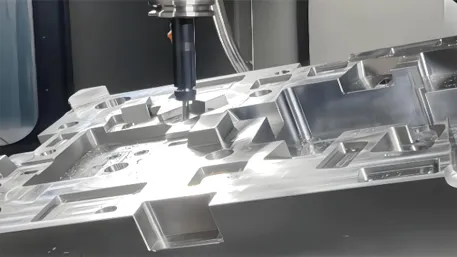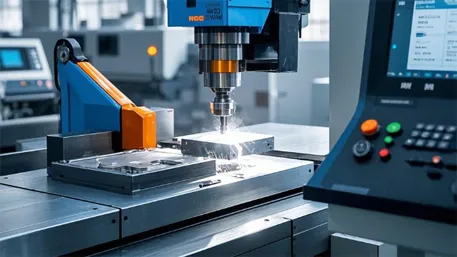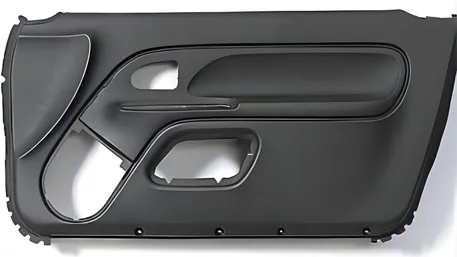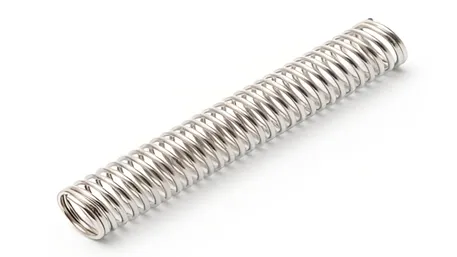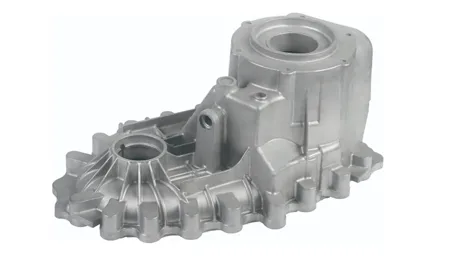In the urgent need of lightweight design, high strength, and complex structure forming in modern manufacturing, aluminum alloy die castings, with their excellent comprehensive properties, have become the core manufacturing solution in many fields such as aerospace, automotive, electronics, and medical devices. Their outstanding thermal conductivity, corrosion resistance, and machining accuracy not only promote the upgrading of product performance but also bring efficient and economical solutions to various industries.
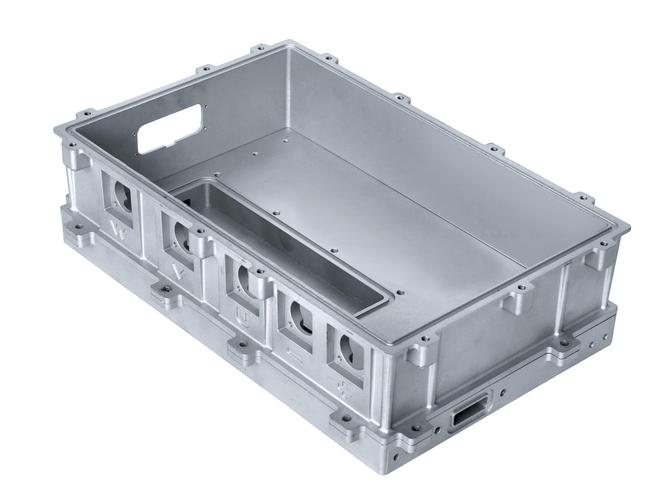
Table of Contents
- Custom Aluminum Alloy Die Castings: The Core Foundation of Manufacturing
- Customized Material Selection: Material Solutions for Diverse Working Conditions
- Precision Manufacturing Process: The Transformation from Liquid Metal to High-quality Die Castings
- Core Technological Breakthroughs: Conquering Complex Forming and Performance Challenges
- Full-process Quality Control: Adherence to High Standards
- Agile Service System: Efficient Response to Diverse Needs
- Aluminum Alloy Die Casting FAQs: Professional Answers to Core Customization Questions
1. Custom Aluminum Alloy Die Castings: The Core Foundation of Manufacturing
Aluminum alloy die castings, with their unique advantages, are widely used in the manufacturing of various key components:
- Lightweight and High Strength: With a density of only 2.7g/cm³, about one-third of that of steel, and a tensile strength reaching 150 – 400MPa, they achieve weight reduction for aircraft in the aerospace field and improve fuel efficiency. In the automotive industry, they reduce the overall vehicle weight and enhance handling performance.
- Complex Structure Forming Ability: Through the die casting process, thin-walled parts with a wall thickness of 0.5mm, deep cavity structures (with a depth-to-diameter ratio of 5:1), and multi-directional undercut features can be achieved, meeting the high-precision requirements of precision casings for electronic devices and complex pipelines for medical devices, with a dimensional tolerance of ±0.03mm.
- Excellent Environmental Adaptability: With a naturally formed oxide film on the surface, they have good corrosion resistance and maintain stable performance in coastal and humid environments. At the same time, their thermal conductivity is as high as 180 – 237W/(m·K), and they are widely used in heat dissipation components to ensure the efficient operation of equipment.
2. Customized Material Selection: Material Solutions for Diverse Working Conditions
1. Performance and Typical Applications of Main Alloys
| Alloy Type | Typical Grade | Core Performance Indicators | Application Fields |
|---|---|---|---|
| General Aluminum Alloy | ADC12 | Tensile strength ≥270MPa, thermal conductivity ≥180W/(m·K), good casting performance | Automotive parts, electronic radiators |
| High-strength Aluminum Alloy | A380 | Tensile strength ≥320MPa, hardness ≥80HB, excellent wear resistance | Aerospace structural parts, motorcycle wheels |
| High-toughness Aluminum Alloy | A356 – T6 | Elongation ≥8%, good airtightness, high fatigue strength | High-pressure valves, pump housings |
2. Customized Material Design
- Reinforcement in the Aerospace Field: Adding trace amounts of nickel (Ni) and magnesium (Mg) to the A380 alloy increases the tensile strength by 20% at 200°C, meeting the performance requirements of key structural components of aircraft under complex working conditions.
- Optimization of Electronic Heat Dissipation: Through grain refinement treatment of the ADC12 alloy, the thermal conductivity is increased to 200W/(m·K), and with a precision flow channel design, the heat dissipation efficiency of electronic device radiators is increased by 15%.
3. Precision Manufacturing Process: The Transformation from Liquid Metal to High-quality Die Castings
1. Mold Design: Micron-level Precision Control
- Optimization of Hot Runner and Cooling System: Using Moldflow for mold flow analysis, optimizing the gate position and the layout of the cooling water channel, reducing the filling time by 20%, improving the temperature uniformity, and controlling the deformation within ±0.02mm.
- Mold Processing Technology:
- Using slow wire electrical discharge machining to process the high-precision mold cavity, with an accuracy of ±0.003mm, ensuring the precision of complex structure forming;
- The mold surface is treated with PVD titanium plating (film thickness 3 – 5μm), increasing the hardness to 2200HV, effectively reducing the sticking phenomenon, and extending the mold life by 40%.
2. Die Casting: Exclusive Process Guarantee
- Vacuum Die Casting Technology: Controlling the vacuum degree at ≤80mbar, with a three-stage pressure boost (initial pressure 80MPa → intermediate pressure 120MPa → final pressure 160MPa), achieving an internal density of die castings ≥99.5%, and an X-ray flaw detection defect rate <0.1%.
- Intelligent Temperature Control System: Real-time monitoring and precise control of the mold temperature (aluminum alloy mold 180±3°C), ensuring that key dimensions fluctuate ≤±0.015mm, meeting high-precision assembly requirements.
3. Post-processing: Double Improvement of Performance and Precision
- Precision Machining:
- CNC milling of surfaces with high flatness requirements (flatness ≤0.03mm/100mm) to ensure component sealing;
- Boring of high-precision holes (roundness ≤0.01mm) to reduce assembly errors and improve overall performance.
- Surface Treatment Process:
- Anodizing treatment forms a 20μm thick oxide film, with a hardness ≥300HV, enhancing corrosion resistance and aesthetics;
- Electrophoretic coating achieves a uniform 30μm coating, passing a 1000-hour salt spray test without rust, suitable for outdoor and harsh environment applications.
4. Core Technological Breakthroughs: Conquering Complex Forming and Performance Challenges
1. Thin-walled and Deep Cavity Forming Technology
- High-speed Filling Process: By optimizing die casting parameters, stable forming of thin-walled parts with a thickness of 1.0mm is achieved, with a filling speed of 60m/s, and the forming qualification rate is increased to 92%;
- Innovative Mold Structure: Using combined core and insert technology, a deep cavity structure with a depth-to-diameter ratio of 8:1 is successfully manufactured to meet the design requirements of special components.
2. Surface Quality Improvement Technology
- Nanoscale Polishing Treatment: Using magnetorheological polishing technology, the surface roughness Ra is reduced to 0.1μm, meeting the surface quality requirements of optical components;
- Chromium-free Passivation Treatment: Using an environmentally friendly chromium-free passivation process, the salt spray test performance is increased by 30%, in line with the EU RoHS 2.0 standard.
3. Upgrade of Non-destructive Testing Technology
- CT Three-dimensional Detection: Using high-precision CT scanning technology, full-size three-dimensional reconstruction of die castings is carried out, with a detection accuracy of 0.05mm, capable of detecting tiny internal defects, and a miss rate <0.02%;
- Ultrasonic Phased Array Detection: Ultrasonic phased array detection of key parts increases the detection sensitivity by 40%, ensuring 100% qualified product quality.
5. Full-process Quality Control: Adherence to High Standards
1. Raw Material Control
- Spectral Analysis: Conducting full-element spectral detection on each batch of alloys (accuracy 0.005%), strictly controlling the Si content in ADC12 alloy at 11.5% – 13.5%, and Fe content ≤0.9%.
- Mechanical Property Testing: Conducting multiple mechanical property tests such as tensile, impact, and hardness on raw materials, with a batch qualification rate ≥99.8%.
2. Process Monitoring
- Intelligent Manufacturing System: Real-time collection of data such as pressure, temperature, and speed during the die casting process through IoT sensors, achieving precise control of production parameters, with an abnormal response time ≤6 seconds.
- First Article Three-inspection System: Conducting full-size inspection (measurement points ≥60), metallographic analysis, and non-destructive testing on the first article, ensuring 100% qualification before mass production.
3. Finished Product Inspection
| Inspection Item | Inspection Method | Standard Requirements | Compliance Rate |
|---|---|---|---|
| Dimensional Accuracy | Coordinate Measuring Machine | Key dimensions ±0.01mm | 99.8% |
| Internal Defects | CT Scanning + Ultrasonic Testing | 0 tolerance for defects ≥0.1mm | 100% |
| Surface Quality | Optical Microscope + Roughness Tester | Roughness Ra≤0.4μm, no air holes or cracks | 99.7% |
| Corrosion Resistance | Salt Spray Test | No rust within ≥1000 hours | 99.5% |
6. Agile Service System: Efficient Response to Diverse Needs
1. Collaborative R&D
- Early Intervention in Design: Providing DFM (Design for Manufacturability Analysis) services during the customer’s product development stage, optimizing the structure design, reducing the mold development cost by 25%, and shortening the development cycle by 18%.
- Joint Technical Research: Collaborating with customers on the research and development of new materials and processes, developing customized aluminum alloy materials and manufacturing processes for special application scenarios.
2. Rapid Delivery
- Rapid Prototyping Service: Combining 3D printing and simple molds, the first sample can be delivered within 5 days, shortening the prototyping cycle by 65% compared with traditional methods.
- Flexible Production Capacity: Equipped with 200 – 1600T die casting machines, with a monthly production capacity of 200,000 pieces, shortening the delivery cycle of conventional products by 32% compared with the industry average.
3. After-sales Guarantee
- Full Lifecycle Service: Providing a full-process service from product design, manufacturing to after-sales maintenance, establishing a product quality traceability system to achieve rapid positioning and resolution of problems.
- Technical Support Team: The professional technical team responds to customer needs 24 hours a day, providing on-site technical guidance, assisting customers in solving problems such as assembly and performance optimization, with a customer satisfaction rate of 98%.
7. Aluminum Alloy Die Casting FAQs: Professional Answers to Core Customization Questions
Q1: What are the commonly used grades of aluminum alloy die castings?
A: Commonly used grades include ADC12 (general-purpose), A380 (high strength), A356 – T6 (high toughness), etc. The most suitable material can be recommended according to the product application scenarios and performance requirements.
Q2: How to ensure the dimensional accuracy of aluminum alloy die castings?
A: Through precise mold design (accuracy ±0.003mm), intelligent temperature control during die casting (dimensional fluctuation ≤±0.015mm), and high-precision machining (key dimensions ±0.01mm), dimensional accuracy is guaranteed in multiple links.
Q3: What is the mold life of custom aluminum alloy die castings?
A: The standard mold life is 500,000 – 800,000 cycles. Using high-performance mold steel combined with surface treatment technology, the mold life can be increased to more than 1.2 million cycles, and mold maintenance services are provided.
Q4: How long does it take from drawing confirmation to mass production?
A: The standard cycle is: requirement confirmation 3 days → mold design 10 days → mold processing 28 days → trial casting 6 days → production preparation 4 days, totaling about 51 days; for urgent projects, it can be compressed to within 38 days through concurrent engineering.
Get an Exclusive Customized Solution Now
The excellent performance of aluminum alloy die castings provides unlimited possibilities for product upgrading in various industries. Whether you are a pioneer in aerospace exploration or an innovator in the consumer electronics field, customized aluminum alloy die castings can provide you with a comprehensive solution from materials to processes. Leave your requirements now – please specify the application field, performance requirements, and annual demand, and we will customize an exclusive technical solution and efficient delivery plan for you within 24 hours.
(Message area: Please specify the application field, performance requirements, and annual demand in detail, and we will reply within 24 hours)

